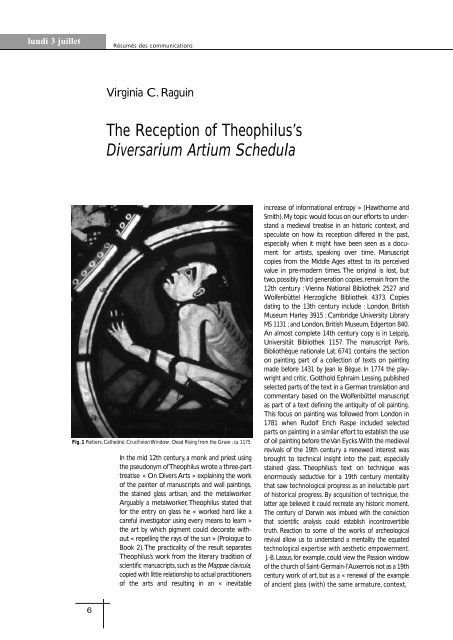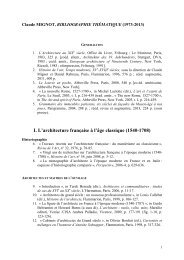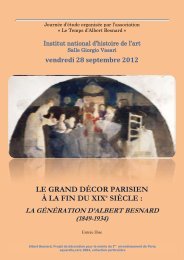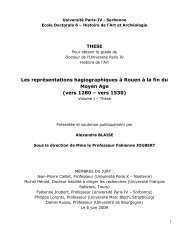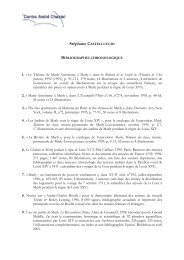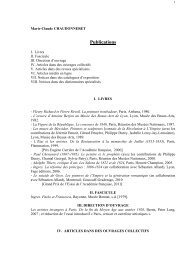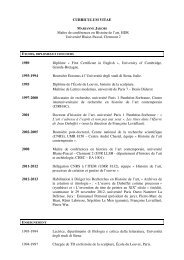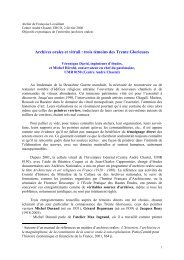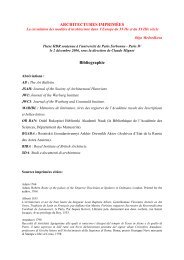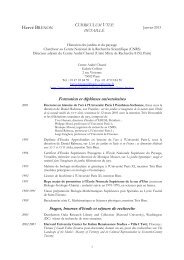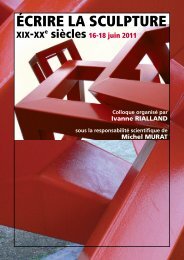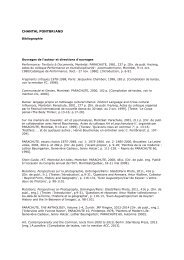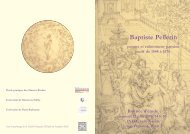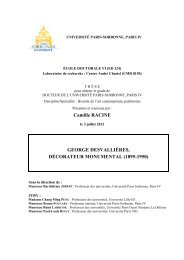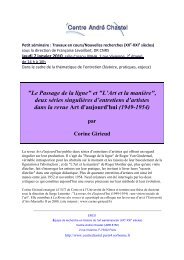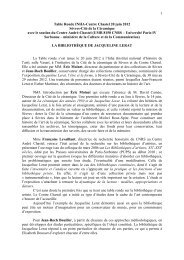Corpus Vitrearum - Centre André Chastel
Corpus Vitrearum - Centre André Chastel
Corpus Vitrearum - Centre André Chastel
You also want an ePaper? Increase the reach of your titles
YUMPU automatically turns print PDFs into web optimized ePapers that Google loves.
lundi 3 juilletRésumés des communicationsVirginia C. RaguinThe Reception of Theophilus’sDiversarium Artium SchedulaFig. 1 Poitiers, Cathedral, Crucifixion Window : Dead Rising from the Grave ; ca. 1175.In the mid 12th century, a monk and priest usingthe pseudonym of Theophilus wrote a three-parttreatise « On Divers Arts » explaining the workof the painter of manuscripts and wall paintings,the stained glass artisan, and the metalworker.Arguably a metalworker, Theophilus stated thatfor the entry on glass he « worked hard like acareful investigator using every means to learn »the art by which pigment could decorate without« repelling the rays of the sun » (Prologue toBook 2).The practicality of the result separatesTheophilus’s work from the literary tradition ofscientific manuscripts, such as the Mappae clavicula,copied with little relationship to actual practitionersof the arts and resulting in an « inevitableincrease of informational entropy » (Hawthorne andSmith).My topic would focus on our efforts to understanda medieval treatise in an historic context, andspeculate on how its reception differed in the past,especially when it might have been seen as a documentfor artists, speaking over time. Manuscriptcopies from the Middle Ages attest to its perceivedvalue in pre-modern times. The original is lost, buttwo,possibly third generation copies,remain from the12th century :Vienna National Bibliothek 2527 andWolfenbüttel Herzogliche Bibliothek 4373. Copiesdating to the 13th century include : London, BritishMuseum Harley 3915 ; Cambridge University LibraryMS 1131 ; and London, British Museum, Edgerton 840.An almost complete 14th century copy is in Leipzig,Universität Bibliothek 1157. The manuscript Paris,Bibliothèque nationale Lat. 6741 contains the sectionon painting, part of a collection of texts on paintingmade before 1431 by Jean le Bègue. In 1774 the playwrightand critic, Gotthold Ephraim Lessing, publishedselected parts of the text in a German translation andcommentary based on the Wolfenbüttel manuscriptas part of a text defining the antiquity of oil painting.This focus on painting was followed from London in1781 when Rudolf Erich Raspe included selectedparts on painting in a similar effort to establish the useof oil painting before the Van Eycks.With the medievalrevivals of the 19th century a renewed interest wasbrought to technical insight into the past, especiallystained glass. Theophilus’s text on technique wasenormously seductive for a 19th century mentalitythat saw technological progress as an ineluctable partof historical progress. By acquisition of technique, thelatter age believed it could recreate any historic moment.The century of Darwin was imbued with the convictionthat scientific analysis could establish incontrovertibletruth. Reaction to some of the works of archeologicalrevival allow us to understand a mentality the equatedtechnological expertise with aesthetic empowerment.J.-B. Lassus, for example, could view the Passion windowof the church of Saint-Germain-l’Auxerrois not as a 19thcentury work of art, but as a « renewal of the exampleof ancient glass (with) the same armature, context,6


